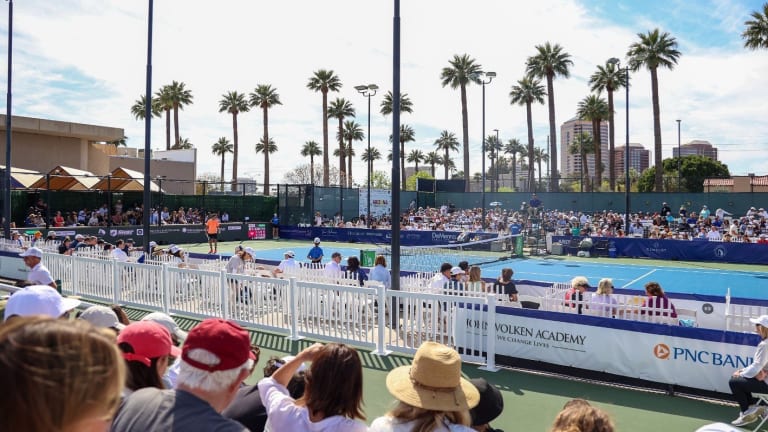PHOENIX—While the second week of the BNP Paribas Open in Indian Wells has played out, another tournament hosted the likes of Matteo Berrettini, Diego Schwartzman and Gael Monfils.
All three of the established veterans on the ATP Tour opted to make the quick trip to the Phoenix Challenger with wild cards in hand after enduring early exits at the first ATP Masters 1000 event of the season. The Arizona Tennis Classic is a popular haven for competitors seeking more match play in between the two stops of the Sunshine Double, and through passionate leadership, continued community support and consistent player buy-in, it's no surprise this highly-regarded event was upgraded to a brand new 175 level this season.
Tournament founder Jonathan Levine, a former all-American who later reached the third round of the US Open, spoke with Baseline to discuss the work behind the scenes to pull off a successful event at the historic Phoenix Country Club.
To start, can you give us a snapshot of the vision behind getting the Phoenix Challenger off the ground four years ago?
LEVINE: Specifically, I was the one that implemented the tournament to come to Phoenix and then put it together with a team of people, volunteers and an organization. We had some great consultants that had been in the business for forever. When we were able to get the week that we wanted (it was in Dallas up until 2018), we scrambled to make the first year work and secured the venue here with the Phoenix Country Club. It's primarily a golf club, but there is a nice tennis membership and they were excited to have it so we were able to work with them on the date and the use of the club, the facilities. The passion that I have for the game is I think what motivated me to want to see it through.
